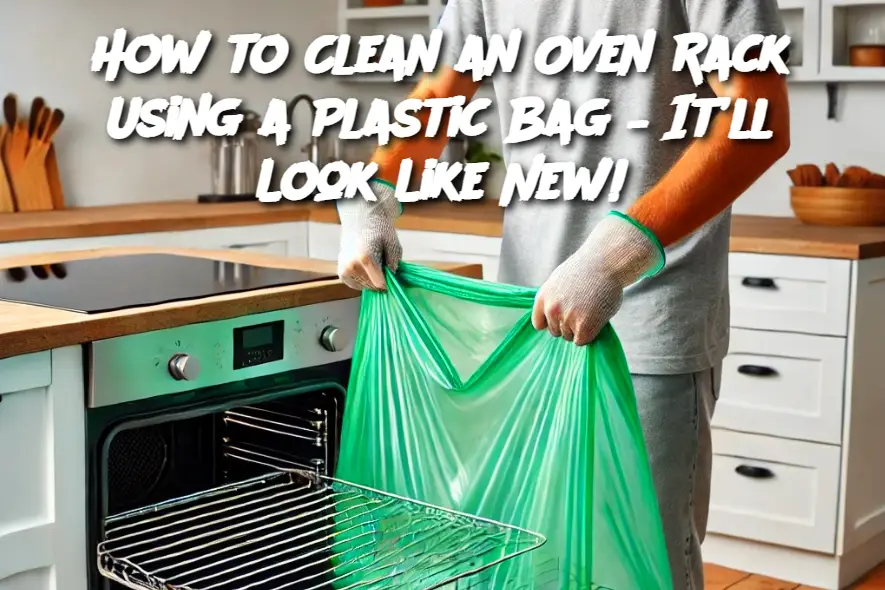Lay the bag flat so the ammonia can work on all parts of the rack.
Leave it for 8–12 hours, or overnight, to allow the fumes to break down grease and grime.
5. Remove and Rinse:
Open the bag in a well-ventilated area, keeping your face away from the fumes.
Remove the rack and rinse it thoroughly with warm water to wash away loosened grime.
Use a sponge or cloth to wipe off any remaining debris—no heavy scrubbing needed!
Optional Alternative Without Ammonia:
If you prefer a chemical-free approach:
Baking Soda and Vinegar Method:
Place the rack in a bag and sprinkle it generously with baking soda.
Pour white vinegar into the bag (it will fizz) and seal it.
Let it sit for 4–6 hours before rinsing and wiping clean.
Tips for Best Results:
Protect Your Workspace:
Use the bag outdoors or on a surface protected with a plastic sheet to avoid ammonia spills.
Regular Cleaning:
Clean oven racks every 1–2 months to prevent heavy buildup.
Ventilate Properly:
If using ammonia, always work in a well-ventilated area or outdoors to avoid inhaling fumes.
Why This Works:
Ammonia: The fumes break down grease and baked-on food effectively without requiring scrubbing.
Plastic Bag: Traps the fumes, concentrating their power on the rack.
With this easy method, you can restore your oven racks to their original shine without hours of scrubbing. The results will leave you—and your kitchen—gleaming! ✨🧽🔥
